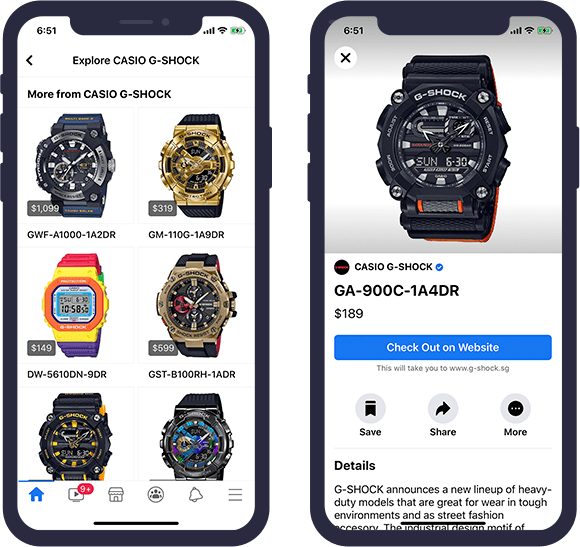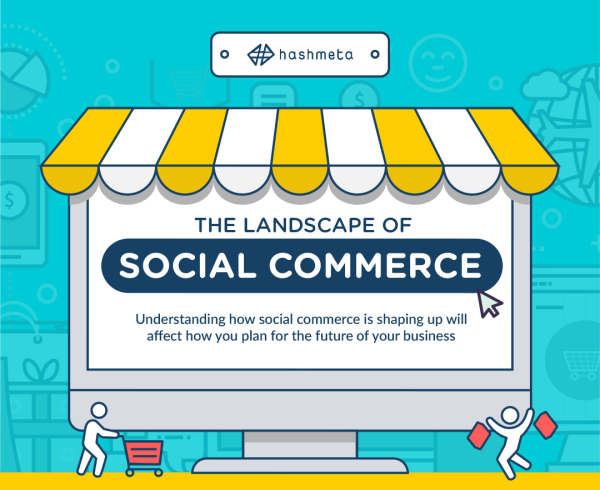15 MIN READ
Most brands are familiar with social media marketing; using social media platforms to redirect users to online or physical stores for conversions. However, the attention span of consumers today is continuously reducing. With the need for a more streamlined customer purchasing journey, social commerce is the emerging trend that is here to stay.
Social commerce is an extension of the existing e-Commerce space. It is a seamless shopping experience within the platform. As more online shopping platforms begin to incorporate more social elements like live streaming and chatbots as part of their strategy, the user experience has evolved. Users can complete the purchasing journey, peruse reviews, and chat with customer service, fundamentally transforming social feeds into shopping catalogues.
Businesses and e-Commerce platforms are diving into social commerce to incentivise and entertain their consumers. The question is, how do you start if you are new to the scene? Here are some important pointers to note when it comes to social commerce.

As the name suggests, it has all to do with the selling of your products. However, rather than your standard e-Commerce platforms, social commerce makes use of social media platforms and elements to complete the sale.
E-Commerce platforms such as Lazada, Shopee, or ShopperCliq offer existing social commerce features like live-streaming, shopping games, and even group-buying. Instead of directing customers elsewhere, everything is contained within an easier and more streamlined process.
Other examples include WhatsApp Business, where the familiar messaging platform can be transformed into a new business outlet. This allows consumers to see your business profile, provide automated messages, and organise your interactions with users in an useful and orderly fashion. Instagram achieves the social commerce aspect with shoppable tags that keep you browsing longer.
By blurring the lines between social media and e-Commerce, the result is something more efficient. Social commerce is fast becoming the go-to choice for many consumers, and that is where you will want to be.

First impressions count, and that is equally important on both social media platforms as well as your e-Commerce sites. That means showing off your best-selling products first. Making sure everything looks good can go a long way to retaining your customers’ attention, and that is vital in the fast-moving climate of today.
Consumers can encounter products via brands, influencers, or ads through avenues such as Instagram Stories. If something catches their eyes, their interaction may lead to the viewing of your product catalogue or even brand page. Engagement and conversion, all conveniently within the platform.
This process of social commerce applies to e-Commerce sites as well. Listing your products, getting them to appear through the feed, and through relevant keywords will give customers plenty to think about. Add in chat functions, user reviews, and even video feeds will only encourage them to keep their eyes on you. The unprecedented interaction between brands and customers is breaking lucrative, new ground.
Why is Social Commerce Important?
With users in both the millennial and Generation Z demographics becoming increasingly essential in sales, these groups must not be ignored on social media. A study by GlobalWebIndex found 42% of social media users rely on social networks for knowledge on product quality and price. The growth in social commerce is no coincidence. Brands who recognise the potential are increasingly implementing social commerce as part of their integrated marketing strategy, helping to drive top-of-funnel brand awareness.
“42% of social media users rely on social networks for knowledge on product quality and price.”
Interactions on social media, including with key opinion leaders, user-generated content, live-streaming content, product reviews, and referral sales within existing social circles motivate 40% of consumers to complete a purchase they have not intended. Social commerce will continue to evolve, and platforms are continually pushing out new functions that you will be able to tap on eventually. Even in rapidly changing circumstances, such as the COVID-19 pandemic, being agile in the digital space is of utmost importance.
“Social commerce should be an essential part of all marketing moving forward.”

Social commerce exists concurrently with social media. It is more than just a shopfront for your business. It also represents a cohesive shopping experience.
Social commerce offers your business a better way to connect with your customers and for them, a more seamless customer experience. When done right, it can make a substantial, positive impact on your product sales, all while building brand love and loyalty.
Keep your audience engaged with visually stimulating imagery, value-added content, and select ‘online-only’ incentives. Your regular social media content plays a huge part in the success of social commerce!
Social commerce is the way forward, and it is time to get ahead. If you wish to learn more about the impact of social commerce and what it can do for you, here is a more in-depth analysis of this evolving space.






